How do many manufacturers achieve cost reductions by 25% and improve product performance?
The answer lies in specialty additives. These advanced materials revolutionize manufacturing processes across the rubber, plastics, silicone, and coatings industries.
In this guide, we will analyze these performance-boosting compounds and examine how they transform base materials in industrial applications.
We will explore the technical science behind specialty, industrial, and polymer processing additives.
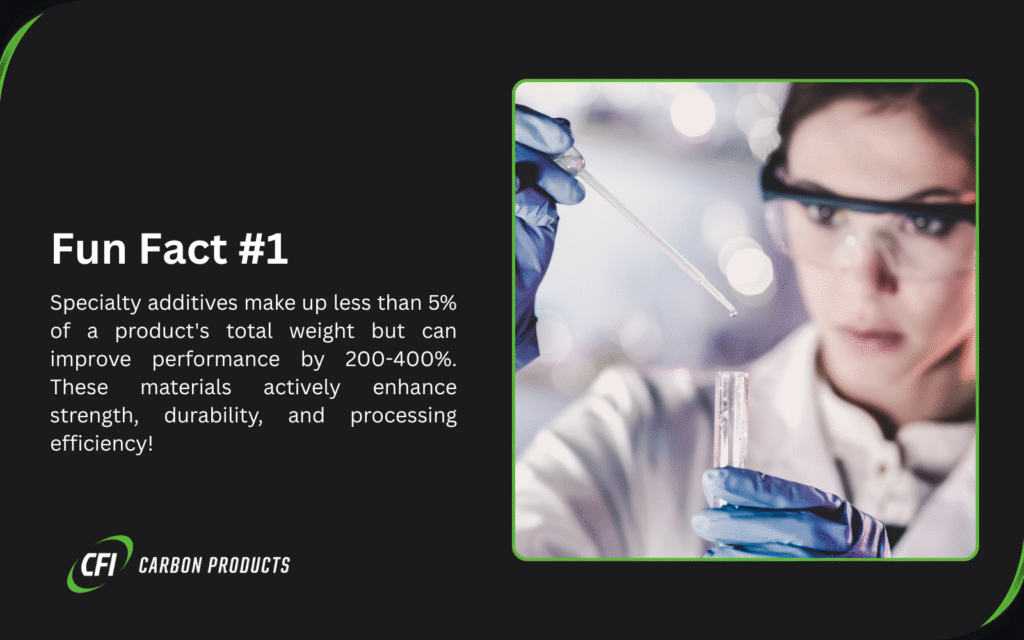
What Are Specialty Additives?
Specialty additives are materials that improve product performance. They make rubber stronger, plastics lighter, and coatings more durable. These additives solve specific manufacturing problems.
Regular fillers just replace expensive materials with cheaper ones. They boost product capabilities, but they also reduce weight, improve strength, and enhance processing speed.
Manufacturers use specialty additives to meet strict performance standards. Companies need products that last longer and cost less to produce. These additives deliver both benefits.
Each industry requires different additive types. Rubber needs different solutions from plastics. Coatings require unique formulations compared to silicone products.
Types of Specialty Additives and Their Functions
Different additive categories serve specific purposes in manufacturing. Each type targets particular performance goals. The choice depends on your product requirements and processing conditions.
| Additive Category | Primary Function | Key Benefits | Common Applications |
| Reinforcement Additives | Mechanical Enhancement | Strength increases, durability | Tires, industrial components |
| Processing Additives | Flow Improvement | Faster cycles, better dispersion | Injection molding, extrusion |
| Functional Additives | Property Modification | UV protection, conductivity | Electronics, outdoor products |
| Sustainable Additives | Environmental Performance | Lower emissions, recyclability | Green manufacturing, eco products |
Manufacturing Performance Benefits
Specialty additives deliver improvements in production processes and help materials flow more smoothly through equipment. This allows you to lower processing temperatures and make cycle times shorter throughout operations.
When additives are used in the right way, they also improve quality consistency and which benefits because it reduces product variations and lowers reject rates across production lines.
| Performance Area | Improvement Range | Timeline | Cost Impact |
| Processing Speed | 15-30% faster | Immediate | 10-20% savings |
| Material Usage | 5-15% reduction | 1-2 weeks | 8-12% savings |
| Energy Consumption | 8-18% decrease | 2-3 weeks | 5-10% savings |
| Quality Consistency | 20-40% better | 1 week | 15-25% savings |
Rubber Industry Applications
If you work in rubber manufacturing, you know how important additives are for getting the performance you need. The right additives can strengthen your products, boost abrasion resistance, and even help you cut down on processing time and energy use.
Tire production is the largest application of rubber additives. Since tires have to meet a range of performance demands, every compound needs to be carefully balanced.
| Rubber Application | Primary Additive Type | Key Benefit | Performance Gain |
| Tire Treads | Reinforcement | Wear resistance | 25-40% longer life |
| Industrial Belts | Processing aids | Flexibility retention | 20-30% better performance |
| Seals and Gaskets | Functional | Temperature stability | 15-25% extended range |
| Rubber Hoses | Sustainable | Chemical resistance | 30-50% longer service |
If you want to learn more about rubber applications, you can check out what carbon black for rubber applications offers for tire and industrial products.
Plastics Industry Solutions
Plastics manufacturing benefits from advanced additives that target specific performance goals. These materials improve processing and improve end-product properties.
Weight reduction represents a major advantage in plastics applications. These compounds maintain strength and reduce density. This cuts material costs and shipping expenses.
Processing improvements occur immediately when you add the right materials. Products flow better through molds. Cycle times decrease significantly. Surface quality improves across all applications.
| Plastic Type | Common Additive | Main Benefit | Typical Loading |
| PVC | Processing aids | Flow improvement | 2-5% |
| Polyethylene | UV stabilizers | Weather resistance | 0.5-2% |
| Polypropylene | Nucleating agents | Faster crystallization | 0.1-0.5% |
| ABS | Impact modifiers | Toughness enhancement | 5-15% |
Cost Analysis and Economic Benefits
Specialty additives deliver cost benefits through multiple pathways, including direct material savings when additives replace expensive base materials and processing improvements that reduce labor and energy costs.
Weight reduction benefits apply particularly to transportation and packaging applications where lighter products cost less to ship and require less raw material to achieve the same performance.
Processing efficiency gains provide immediate cost reductions through faster cycle times that increase production capacity, lower processing temperatures that reduce energy consumption, and better material flow that reduces waste.
| Cost Benefit Category | Typical Savings | Payback Period | Long-term Impact |
| Material costs | 8-15% | 2-6 months | Ongoing savings |
| Processing efficiency | 10-25% | 1-3 months | Increased capacity |
| Quality improvements | 5-12% | 3-9 months | Better reputation |
| Weight reduction | 6-18% | 1-4 months | Shipping savings |
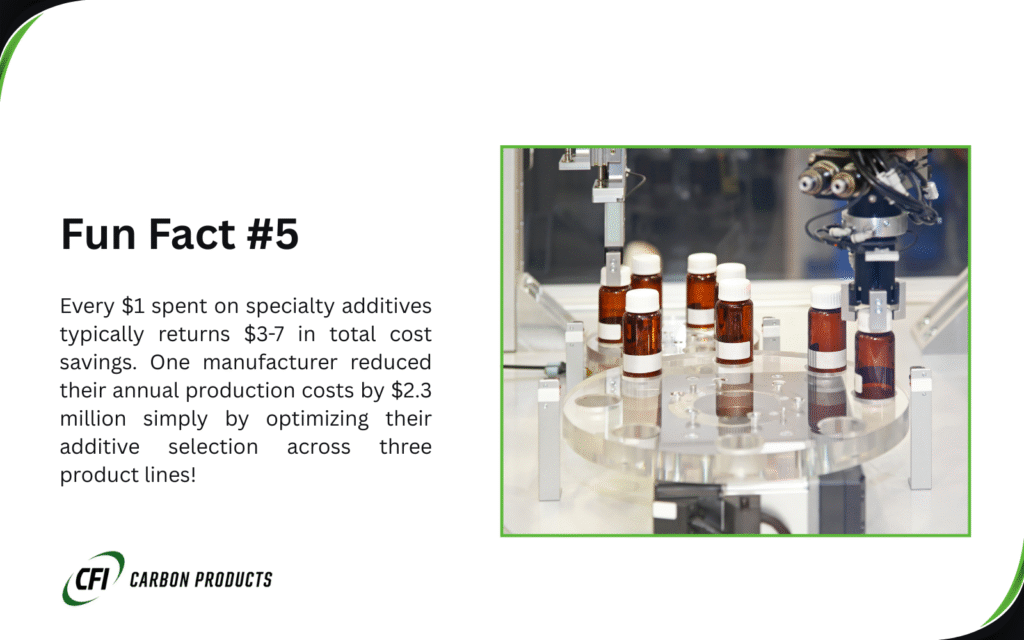
Technical Performance Characteristics
Specialty additives must meet specific technical requirements to deliver performance benefits. Particle size affects dispersion quality and final properties. Surface area influences reinforcement effectiveness.
Physical properties determine additive behavior during processing. Density affects material flow and mixing characteristics. Chemical compatibility prevents adverse reactions with base materials.
Electrical properties matter for many applications. If you want to learn more about electrical characteristics, you can check out what carbon conductivity means for electronic and automotive applications.
Testing protocols validate additive performance before full-scale implementation. Laboratory testing identifies optimal loading levels. Pilot-scale trials confirm processing compatibility.
Quality control measures maintain consistent additive performance. Batch testing confirms specifications. Statistical process control monitors production quality.
| Property Category | Test Method | Typical Range | Impact Area |
| Particle size | Laser diffraction | 10-500 nm | Dispersion quality |
| Surface area | BET analysis | 50-1500 m²/g | Reinforcement level |
| Density | Pycnometry | 0.8-2.5 g/cm³ | Processing behavior |
| pH value | Electrode method | 3-11 | Chemical compatibility |
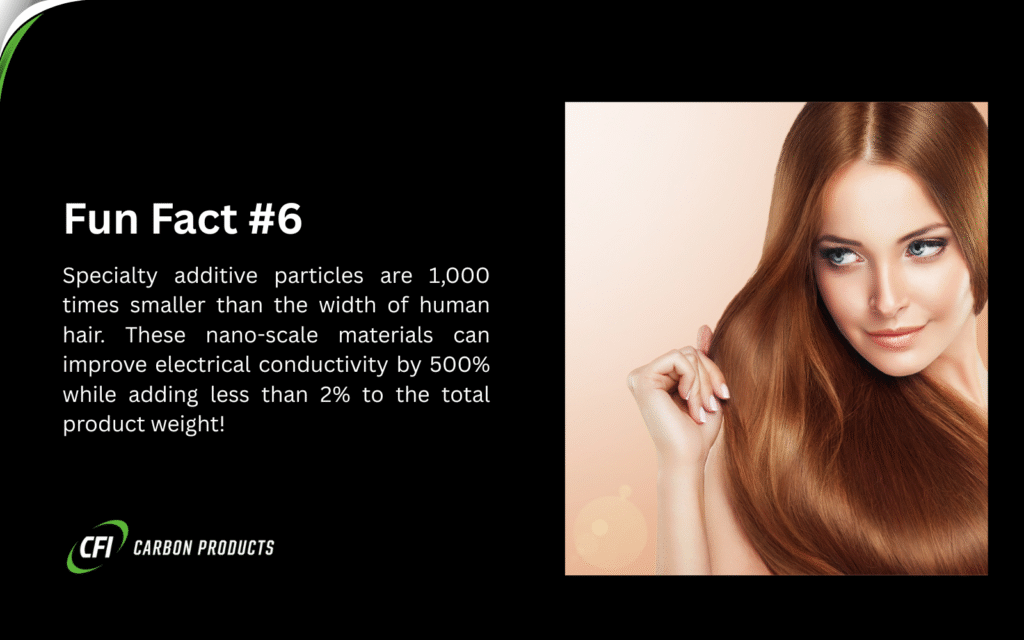
Sustainability and Environmental Impact
Modern additives address environmental concerns. Low-emission production processes reduce carbon footprint, and renewable raw materials support sustainability goals.
Product durability improvements contribute to environmental benefits. Longer-lasting products reduce replacement frequency. This cuts overall material consumption and waste generation.
Recycling compatibility represents another sustainability advantage. Materials that don’t interfere with recycling processes support circular economy principles. These compounds maintain performance in recycled applications.
Environmental regulations continue to tighten across all industries. Advanced additives help you meet these requirements. They provide performance benefits while reducing environmental impact.
| Sustainability Metric | Improvement Potential | Implementation Time | Cost Impact |
| CO2 emissions | 15-30% reduction | 6-12 months | Neutral to positive |
| Energy consumption | 10-20% decrease | 3-6 months | 5-15% savings |
| Waste generation | 8-25% reduction | 1-3 months | 10-20% savings |
| Recyclability | 20-40% improvement | 3-9 months | Variable |
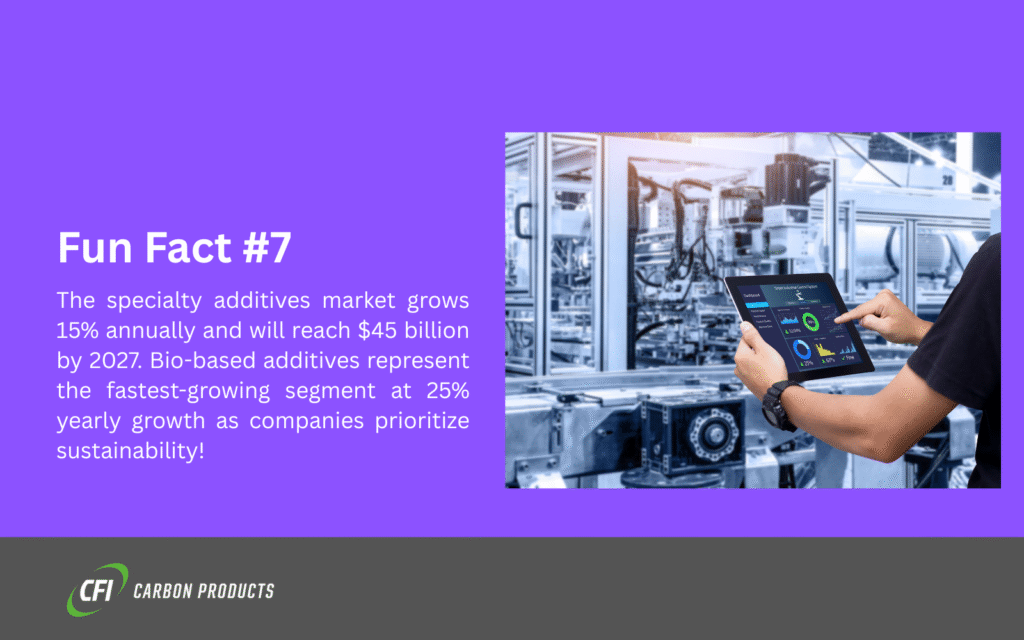
What You Should Know About Specialty Additives in Manufacturing
Specialty additives play a vital role in manufacturing. They can improve performance, reduce costs, and support sustainability.
If used properly, specialty additives can improve quality, increase efficiency, and help develop a more consistent and reliable process.
Adding an additive does not guarantee maximum benefit. Success depends on understanding how additives work together and ensuring your processing conditions are correct.
That’s why lab tests help you to avoid unpleasant surprises and high costs when scaling up production.
Return on investment goes beyond raw material savings. Specialty additives can create value-added products, stabilize your process, reduce defects, and speed up production.
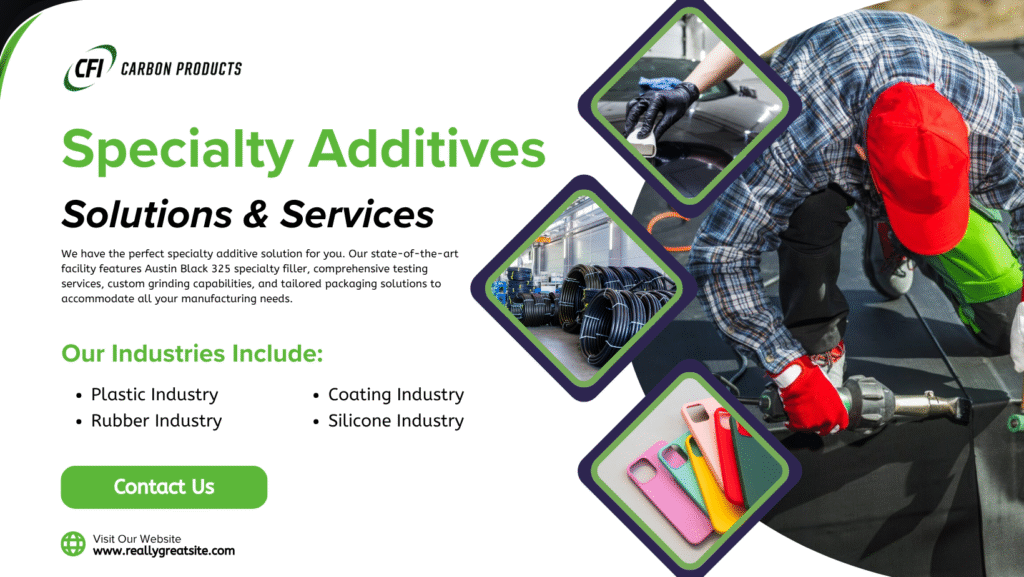
Trust CFI Carbon Products for High-Performance Additives For Paints
CFI Carbon Products brings over 35 years of experience in manufacturing specialized filler materials for the rubber, plastics, silicone, and coatings industries.
From formula testing to global distribution, CFI controls the entire process while maintaining strict quality standards and environmental responsibility.
Our Austin Black 325 and services help manufacturers reduce costs, improve product performance, and meet sustainability goals across multiple industries.
Contact CFI Carbon Products today to discuss your specialty additive needs and discover how our proven solutions can enhance your manufacturing operations.

